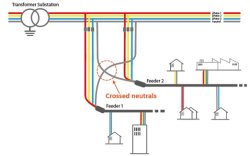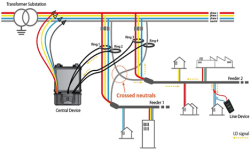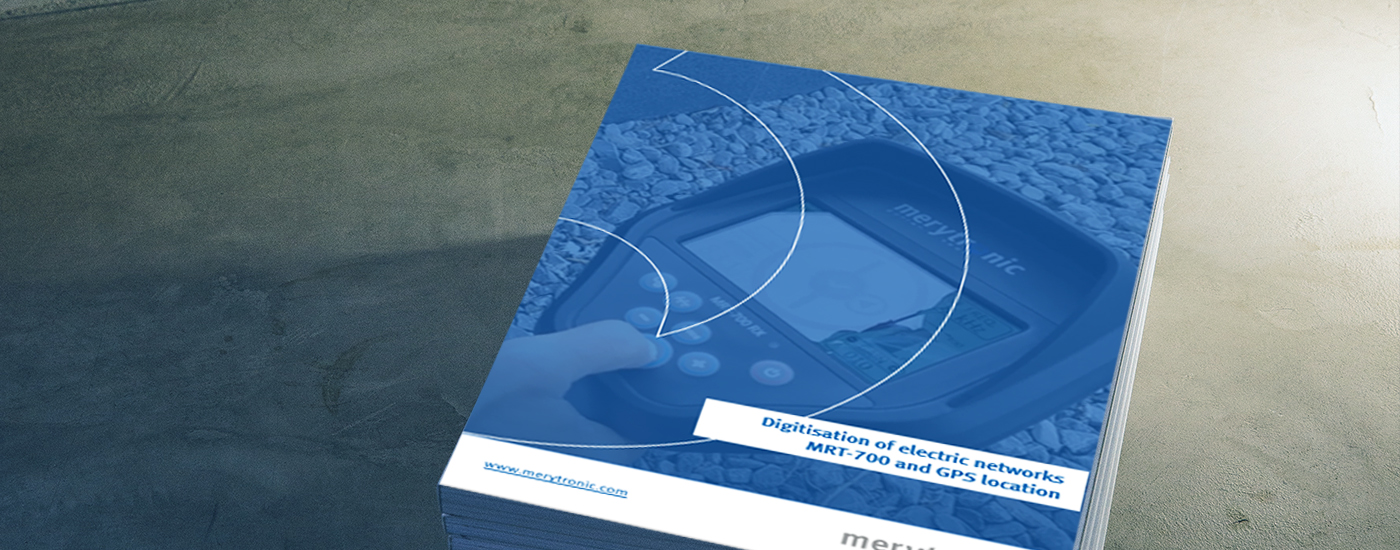
Correct installation-identification of the neutral of a Low Voltage distribution feeder
While in the previous article we discussed the importance of determining network topology, i.e. identifying the phase, feeder and transformer supplying a customer, this new article will focus on the importance of knowing the correct connection of the neutral on each feeder in a Low Voltage panel.
Normally, in any Secondary Substation there are one or more transformers that feed one or more Low Voltage panels, which, in turn, divide the power supplied into different feeders to provide all customers in a more efficient and balanced way.
Throughout their useful life, Low Voltage feeders undergo different changes and modifications, which imply connection changes for customers and, consequently, databases changes which, in many occasions, are not updated correctly. Apart from this issue, there is the possibility that the neutral wire belonging to a specific feeder is not the neutral of that feeder but of another feeder in the same Low Voltage panel. Either during installation or during a Low Voltage panel replacement operation, it is possible that the phases of a feeder are correctly identified but, as the neutral enters through the lower shared strip, the identification is not so carefully carried out and the wire ends up being connected in any order, ignoring its significance.
Correct neutral installation is key, as it can trigger a series of issues and malfunctions, some of them with serious consequences for supply quality.
Issues resulting from incorrect connection of the neutral wire
As shown in Figure 1, disconnecting Feeder1 (including the neutral) during maintenance work would actually leave Feeder2 without the neutral. Removing the neutral reference on Feeder2 unbalances distribution, and can result in undervoltage or surges ranging from a few volts above nominal mains voltage, up to 400Vac.
Due to these voltage variations, breaks of devices connected to that feeder can occur in different customer installations, resulting in significant fines being charged to the distribution company.
Note: In some installations, a redundant reference neutral is placed in the General Protection Panel to avoid this type of issues.

Image 1. Network diagram in which the neutrals of two feeders have been crossed.
How to correctly identify the corresponding neutral of each Low Voltage feeder
In order to face this issue, Merytronic has developed a working procedure using its ILF G2 | ILF G2 Pro connectivity devices. These can effectively and simply solve the issue, as they can identify both the phases of each feeder and its corresponding neutral.
By performing device connections as shown in image 2, it is possible to obtain complete customer and Low Voltage panel network connectivity or topology, in a very fast way and with total reliability.

Image 2. Device wiring diagram for neutral identification
In this particular case, in order to verify the neutrals, the Central Device must be installed in the Secondary Substation, and each neutral wire must be surrounded with a Rogowski coil, with its point/polarity facing the customers/charges, while the rest of the coils must surround the three phase wires of each feeder at the same time (with its point/polarity facing the transformer). Then, the signal must be sent between the phase and the neutral at a point between the transformer and the customer, using the LineDevice. Subsequently, the Central Device will be able to detect from which of the coils surrounding the neutrals the signal arrives.
This step, which only takes a few minutes, ensures correct neutral installation after carrying out an operation in which it is necessary to take them out, i.e. changing a Low Voltage panel. Nowadays, numerous issues can be found that derive from this incorrect installation, and for this reason, it is increasingly convenient to use solutions that check that the work has been carried out correctly.
Conclusion
Thanks to this simple verification procedure carried out with the ILF G2 | ILF G2 Pro, a device designed to identify LV feeders and phases, it is possible to safely, quickly and certainly verify that neutral wires are correctly connected to the feeder, thus avoiding issues derived from a bad connection.
A correct and complete network topology, including neutral connections, is the basis for distribution network digitisation. In this way, it is possible to develop tools that help electric utility companies manage their networks more effectively and efficiently, and thus be able to meet current and future energy needs.

Do you want to know more about our Low Voltage Topology Network Identifier devices? Contact us and we will answer all your questions, click here!
Related News
Introducing Zillion, our new Smart Grids ecosystem
At Gorlan, today we take a decisive step toward the future. We present Zillion, our...
Merytronic at Enlit Europe 2025
Enlit Europe 2025. Discover our Smart Grid solutions from 18 to 20 November in Bilbao....
How to digitise your Low Voltage network
How to digitise your Low Voltage network with Merytronic solutions: mapping and monitoring for network...









